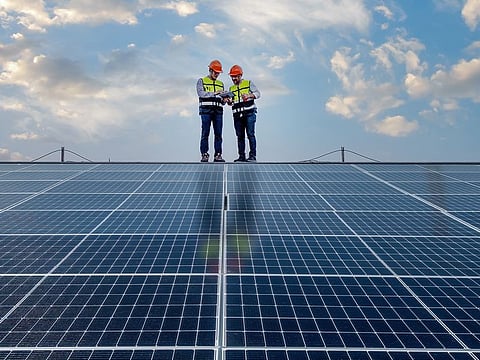For India, solar power is turning into an economic game-changer
One of the world’s biggest economies is reaping the windfall from its solar push

As the sun rose over Kamuthi in the south Indian state of Tamil Nadu one June morning in 2016, it illuminated not just another bustling Indian village but the sprawling expanse of the Kamuthi Solar Power Project.
Spread over 2,500 acres, this engineering marvel, once the world's largest solar plant at a single location, is a testament to India’s ambitions with solar energy. What started as an innovative solution to meet local energy needs has since grown into a symbol of India’s global leadership in renewable energy.
India’s solar journey has been nothing short of transformative. With an ambitious target of achieving 280GW of solar capacity by 2030, the country is positioning itself as a renewable energy superpower. As of 2024, India has already achieved over 70GW of installed solar capacity, making it the fifth-largest solar power producer globally.
This rise is not merely about meeting domestic energy needs but about reshaping the global energy landscape.
The International Solar Alliance (ISA), an initiative spearheaded by India and launched at the 2015 Paris Climate Summit, exemplifies the nation’s leadership. The alliance brings together over 120 countries to promote solar energy adoption worldwide.
Prime Minister Narendra Modi’s assertion during the summit, urging world leaders to move towards a future of ‘one world, one sun, one grid’ in which countries around the world would share electricity so that none is without it, has since become a rallying cry for nations grappling with the dual challenges of energy security and climate change.
Government initiatives such as the National Solar Mission have accelerated India’s solar revolution. By offering incentives like tax benefits, subsidies, and production-linked incentives (PLI), India has created an ecosystem where private sector participation thrives. Companies like Adani Green Energy and Tata Power are not only helping meet domestic demand but also exporting solar technology expertise abroad, underscoring India's growing clout in the renewable sector.
Driving the green economy
Solar energy is not just an environmental imperative; it’s an economic opportunity. Employment in the Indian renewable energy sector reached an estimated 1.02 million in 2023, with the solar PV sector in the country employing about 319,000 people.
India’s solar projects have also transformed lives at the grassroots level. In Rajasthan, for example, the Bhadla Solar Park has become a lifeline for thousands. What was once barren desert now houses one of the world’s largest solar parks, generating over 2,245MW of power and supplying clean energy to millions of homes.
While the achievements are significant, challenges remain. Land acquisition, supply chain bottlenecks for critical components, and the need for substantial investment- estimated at $200 billion to meet the 2030 target - are hurdles that must be overcome.
Yet, India has shown resilience in tackling these challenges head-on.
The government’s push for domestic manufacturing under the ‘Atmanirbhar Bharat’ (self-reliant India) initiative is a game-changer. By reducing reliance on imports for photovoltaic cells and modules, India aims to build a robust supply chain that can meet both national and global demand.
Inspiring the world
India’s solar trajectory is a blueprint for developing nations seeking to balance growth with sustainability. The ISA’s global influence, coupled with India’s technological and policy innovations, ensures that the sun never sets on this solar revolution.
Sign up for the Daily Briefing
Get the latest news and updates straight to your inbox




